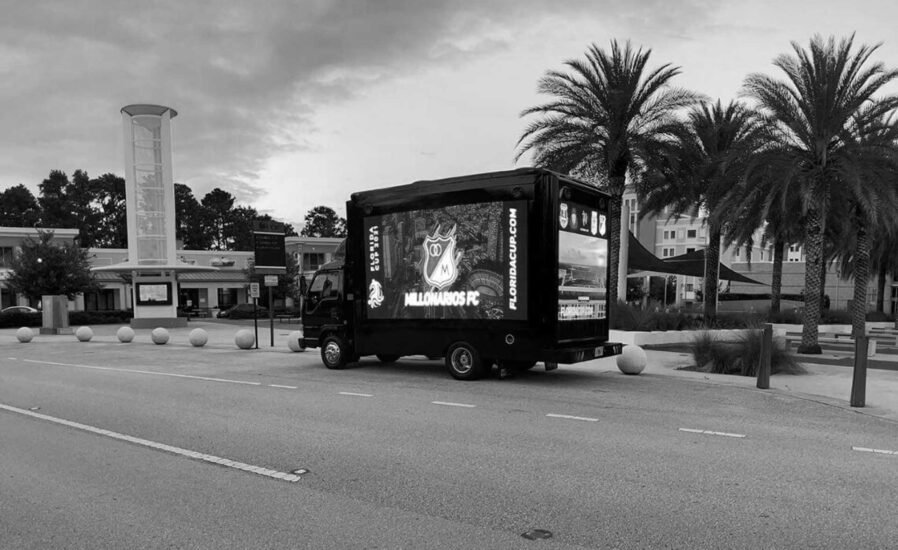

In the ever-evolving world of advertising, digital billboard trucks have emerged as a dynamic and attention-grabbing medium. These mobile displays combine the power of traditional outdoor advertising with the versatility of digital technology, allowing advertisers to reach their target audience in innovative ways. However, like any advertising platform, digital billboard trucks come with their own set of advantages and drawbacks. Let’s explore the pros and cons of this intriguing advertising tool.
Pros:
Enhanced Visibility: One of the most significant advantages of digital billboard trucks is their ability to capture attention. These mobile displays are hard to miss as they move through busy streets, attracting the eyes of pedestrians, motorists, and passersby. Their dynamic nature and bright, high-resolution screens make them stand out in the urban landscape, ensuring that your message gets noticed.
Targeted Reach: Digital billboard trucks offer unparalleled flexibility when it comes to targeting specific demographics and locations. Advertisers can strategically deploy these mobile displays in areas with high foot traffic or during events where their target audience is likely to be present. This targeted approach maximizes the effectiveness of the advertising campaign and increases the likelihood of engagement.
Real-Time Updates: Unlike traditional static billboards, digital billboard trucks allow advertisers to update their content in real time. This flexibility enables brands to stay relevant and adapt to changing circumstances quickly. Whether promoting a flash sale, announcing a new product launch, or providing live updates, digital billboard trucks offer unmatched agility in delivering timely messages to consumers.
Cost-Effective: Despite their advanced technology and mobility, digital billboard trucks can be a cost-effective advertising solution compared to other mediums like television or print. With lower production costs and the ability to reach a wide audience without the need for multiple placements, advertisers can achieve a high return on investment with targeted and impactful campaigns.
Environmental Impact: Digital billboard trucks offer environmental benefits compared to traditional static billboards. By utilizing energy-efficient LED displays and reducing the need for paper-based advertising materials, they contribute to a greener advertising ecosystem. Additionally, the mobility of these displays reduces the visual clutter associated with fixed installations, preserving the aesthetic appeal of urban environments.
Cons:
Regulatory Challenges: One of the primary drawbacks of digital billboard trucks is the regulatory challenges they face in some jurisdictions. Local governments may impose restrictions on the use of mobile advertising displays, citing concerns about traffic safety, visual pollution, and zoning regulations. Navigating these regulatory hurdles can pose a significant barrier to the widespread adoption of digital billboard trucks in certain areas.
Limited Exposure Time: While digital billboard trucks offer high visibility, their exposure time to individual viewers is relatively brief compared to other advertising mediums. Pedestrians and motorists may only have a few seconds to absorb the message displayed on the moving truck, limiting the opportunity for in-depth engagement. Advertisers must carefully craft concise and compelling content to make the most of this fleeting attention.
Technical Limitations: Despite their advanced technology, digital billboard trucks are not immune to technical glitches and limitations. Factors such as weather conditions, sunlight glare, and battery life can impact the effectiveness of the displays. Ensuring consistent performance and optimal visibility may require ongoing maintenance and monitoring, adding to the operational costs for advertisers.
Saturation and Overexposure: In densely populated urban areas, the proliferation of digital billboard trucks and other mobile advertising vehicles can lead to saturation and overexposure. When multiple advertisers compete for attention simultaneously, the effectiveness of individual campaigns may diminish, and viewers may become desensitized to the constant stream of advertising messages. Maintaining a balance between visibility and audience fatigue is essential for maximizing the impact of digital billboard truck campaigns.
Limited Targeting Precision: While digital billboard trucks offer greater flexibility in targeting specific locations, their ability to deliver highly personalized content to individual consumers is limited compared to digital channels like social media or online advertising. Advertisers must rely on broader demographic targeting strategies rather than granular audience segmentation, which may result in less precise message delivery.
In conclusion, digital billboard trucks represent a dynamic and impactful advertising medium with distinct advantages and drawbacks. While their enhanced visibility, targeted reach, and real-time updates make them a compelling choice for advertisers looking to make a bold statement, regulatory challenges, limited exposure time, and technical limitations underscore the need for careful planning and execution. By understanding the pros and cons of digital billboard trucks, advertisers can harness their potential to create memorable and effective campaigns that resonate with their target audience.
Last modified: November 18, 2024


